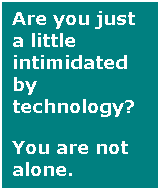 System
Administrator Training System
Administrator Training
DTAS has automated many of the tasks
usually associated with administration of computer assisted case
tracking. However, support costs can be kept to a minimum by assigning
one or more individuals the responsibility of System Administrator.
DTAS is an exceptionally easy system
to learn and use. The majority of users will rarely find the need
to even refer to the comprehensive on demand help system. Most
will start right in adding and managing cases
simply by completing the Skill Builder package of printed
tutorials included with your installation.
However, the System Administrator will be
someone that will take a greater interest in exploring the software
features. They do not necessarily require more knowledge of
computers, only the curiosity and attention to detail of most "Eager
Adopters" of new technology (see sidebar).
DTAS has extensive custom configuration
options as part of the special Comfort
Fit Technology (CFT) design. These options allow a System
Administrator to fine tune the system to meet the needs of your
organization, without the need and expense of custom programming
services.
Among other things, System Administrator
Training will include:
-
General overview of the primary
operation areas of DTAS
-
Initial setup of case codes and other
operating parameters
-
Early Warning System (EWS)
features
-
Modification and tracking of case codes
-
Screen configuration options
-
Case and staff reminder systems
-
Safeguards designed into DTAS to
protect case data
-
Review of After Hours or Unattended
Operations
-
Monthly and year-end closes
System Administrator Training can be
conducted as inexpensive, Internet- based or classroom training.
|

All too often, software developers
ignore some of
the most important facts about today’s technology.
For example, in spite of the
proliferation of new technology, according to research funded by MCI and
conducted by clinical psychologist Michelle Weil, about
70 percent
of office workers feel hesitant or resistant about technology.
Only 30 percent are
"Eager Adopters" who look forward to getting
the newest technology with all the bells and whistles (please see
Technostress)
|


